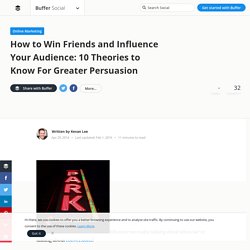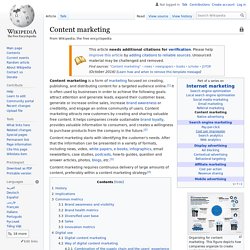

Fascinating Podcasts on Fundraising & Philanthropy - Monsterful Resources. As a voracious podcast consumer, I’m always excited when one of my favorite podcasters does an episode about philanthropy and fundraising.

Sure, there are lots of podcasts out there devoted to the topic but I think what delights me is that these issues are being heard by a more general audience. Maybe it will reduce the number of people who ask, “So…What, exactly, do you DO?” What Gives? Generosity in America Backstory with the American History Guys Episode Description: Tis the season for giving. Aristotle's Rhetoric. 1.

Works on Rhetoric According to ancient testimonies, Aristotle wrote an early dialogue on rhetoric entitled ‘Grullos’, in which he put forward the argument that rhetoric cannot be an art (technê); and since this is precisely the position of Plato's Gorgias, the lost dialogue Grullos has traditionally been regarded as a sign of Aristotle's (alleged) early Platonism. But the evidence for the position of this dialogue is too tenuous to support such strong conclusions: it also could have been a ‘dialectical’ dialogue, which listed the pros and cons of the thesis that rhetoric is an art. We do not know much more about the so-called ‘Technê Sunagogê’, a collection of previous theories of rhetoric that is also ascribed to Aristotle. Cicero seems to use this collection itself, or at least a secondary source relying on it, as his main historical source when he gives a short survey of the history of pre-Aristotelian rhetoric in his Brutus 46–48. 2.
The structure of Rhet. 3. 4. 5. 6. 7. Alphabetic list of Theories. Reciprocity Norm. Explanations > Theories > Reciprocity Norm.

Social Media Influence: 10 Theories to Know For Greater Persuasion. What are we really talking about when we’re talking about conversions?

Persuasion, right? Influence. Ethos, Pathos, and Logos. A General Summary of Aristotle's Appeals . . .

The goal of argumentative writing is to persuade your audience that your ideas are valid, or more valid than someone else's. The Greek philosopher Aristotle divided the means of persuasion, appeals, into three categories--Ethos, Pathos, Logos. Ethos (Credibility), or ethical appeal, means convincing by the character of the author. We tend to believe people whom we respect. How to Say It: Choice Words, Phrases, Sentences, and Paragraphs for Every ... - Rosalie Maggio. 14 Must-Know Stats About Fundraising, Social Media, and Mobile Technology.
Spring is report season in the nonprofit sector.

A slew of new data is released and this year the emerging theme is that online fundraising is rapidly rising, especially on mobile devices. Nonprofits that have not yet adopted a mobile-first approach to online communications and fundraising can use the new data to help convince executive staff and board that a new mobile-compatible website should be high on their priority list. Crowdfunding, peer-to-peer fundraising, monthly giving, and email fundraising is also proving to be effective, as you can read and see below. 1.
Responsive design doubles giving on mobile devices. Source: DonorDrive 2. Source: Artez Interactive 3. ShowFile. Quick Facts About Nonprofits. 50 Fascinating Nonprofit Statistics. Giving Statistics : Charity Navigator. Few people realize how large charities have become, how many vital services they provide, and how much funding flows through them each year.

Without charities and non-profits, America would simply not be able to operate. Their operations are so big that during 2014, total giving was more than $358 billion. How big is the sector? Charitable Giving Statistics. What Makes People Give? Amazon. 04_12_Macroeconomics_of_Fundraising_Whitepaper. Dancing YouTube Sensation Karen Cheng's 10 Tips For Making Your Video Go Viral. Content Marketing for Online Fundraising & Crowdfunding. Introduction to content marketing What is content marketing?

You’ve seen content marketing everywhere, but maybe you haven’t put a name to it yet. The blog posts, white papers, infographics, news stories, slideshows, how-to’s, and case studies you see shared by companies and nonprofits are all considered content marketing. Advertisements appeal to you by making the brand attractive or desirable. Content marketing, however, provides you with information that is relevant to your interests and connects you to a company’s product or service.
Content marketing. Form of marketing focused on creating content for a targeted audience online Organizing for content marketing.

This figure depicts how companies organize to create content in harmony. Content marketing is a form of marketing focused on creating, publishing, and distributing content for a targeted audience online.[1] It is often used by businesses in order to: Attract attention and generate leadsExpand their customer baseGenerate or increase online salesIncrease brand awareness or credibilityEngage an online community of users Content marketing attracts prospects and transforms prospects into customers by creating and sharing valuable free content. Unlike other forms of online marketing, content marketing relies on anticipating and meeting an existing customer need for information, as opposed to creating demand for a new need.
When businesses pursue content marketing, the main focus should be the needs of the prospect or customer. History In the 1990s, everything changed for marketers. Sales. Content Marketing Movie. How One Nonprofit Raised $150 Million Going Outside Tradition. The Rule of 7: How Social Media Beats Other Forms of Marketing. Researchers Say Infographics Can Save Morons From Themselves. Really? It’s a sad fact of our cultural moment that anyone can marshall their own "facts" to support just about any argument or political position imaginable.

(Thanks, Internet.) What’s worse, psychology studies have shown that rebutting factually impoverished arguments with actual facts has precisely the opposite effect one would hope: it actually makes people cling even tighter to their fictions. Is there anything that can cut through this Gordian knot of nonsense? According to researchers at Dartmouth College and Georgia State University, infographics might do the trick. Political scientists Brendan Nyhan and Jason Reifler designed some experiments to test the efficacy of graphical "correctives" to inaccurate beliefs. The Effectiveness of Infographics as a Marketing Tool [Infographic] Google is going to start differentiating between “good” infographics and “bad” infographics. So what? People LOVE infographics. And I wonder how Google will “know” which Infographics are good/bad when some of the worst Infographics are found on some of the most popular sites. Check out a turd of an Infographic on Mashable. Understanding Contrast for Graphic Design.
March 9, 2014 6:30 am Mark Masters Whether you’re working on a layout for a brochure or designing a band poster, establishing contrast is one of the most important things to consider. Contrast is something people are drawn to but it’s one of those things that, when done correctly, shouldn’t really be noticed. Done incorrectly though and […] Whether you’re working on a layout for a brochure or designing a band poster, establishing contrast is one of the most important things to consider.
Contrast attracts the eye, adds visual interest to a composition and can be in many different forms. Emotional content of an image attracts attention more than visually salient features in various signal-to-noise ratio conditions. 5 Ways to Make Shareable Images That Drive Traffic. 7 Powerful Facebook Statistics You Should Know About. One of the things we focus on most at Buffer is the best time to post to Twitter and Facebook. This is because we want to help you get more engagement with your audience, which is beneficial for everyone.
While the best time to post is definitely important, there are some other things to keep in mind. I had a look at what kind of updates work best for Facebook pages to increase interaction and found seven interesting statistics that you’ll probably find useful if you’re trying to make your page more engaging. 1. Photos as Web Content. Headline Psychology: 8 Tricks to Attract User Attention. Why do other people’s posts get clicks in the hundreds while your excellent innovative studies stay persistently underrated? You may be missing one of the most powerful user attractions of all – an engaging headline. In this article, you’ll find 8 elements that will make your headlines winners, and you’ll learn exactly why they are such effective tricks in terms of human psychology. Here we go! 1. Surprise Surprises in headlines work because human brains like novelty.
0107_0800_0301.pdf. Jblumenstock_mobilequakes.jmp.pdf. WatersStewardshipPublication.pdf. The psychology of persuasion – reciprocation. JPubEcon_Fundraising_through_online_social_media_2014.pdf. How Charities Can Get More Out of Donors. Helping Others is Good for You. We have a universal need to feel connected to others. Although we can survive in isolation, we cannot thrive without a sense of belonging and membership in some type of community. Charity: The Psychology of Giving. Information Foraging: Why Google Makes People Leave Your Site Faster. 10 Useful Findings About How People View Websites. Eyetracking and research have studied how people look at websites.
Here are 10 useful findings you can use. How Little Do Users Read? What You Think You Know About the Web Is Wrong. If you’re an average reader, I’ve got your attention for 15 seconds, so here goes: We are getting a lot wrong about the web these days. More than meets the eye. 15 Must-Know Facts on How People View Websites. Eye tracking study reveals 12 website tactics. Eye tracking studies have revealed valuable information about how people read and interact with websites.
One study, Eyetrack III, published a summary of their eye tracking results for news sites. Eye tracking. What Is Diffusion of Responsibility? By Kendra Cherry. Influence and Persuasion: The Rule of Social Proof. Diffusion of responsibility. Somebody else's problem. 6 Reasons Why People Don't Give to Our Causes. The Life You Can Save: Acting Now to End World Poverty - Peter Singer. The science behind why people give money to charity.
Wp326.pdf.